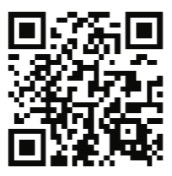The Washington Office of Forest Service Fire and Aviation Management recently published a Special Edition of their Green Line newsletter and it highlighted some of the work we are doing here in the WFM RD&A. We would like to share these stories with you along with a copy of the Newsletter itself. Hats off to Tim, Andrew, and Ben for the great work on these projects!
You can view a copy of the full newsletter
here
 TwitterFire
TwitterFire
For the past two fire seasons Wildland Fire Management RD&A (WFM RD&A) staff have been mining tweets about wildfires from Twitter's enormous pool of data with the goal of developing an early warning system for new and emerging wildfires. Utilizing the existing structure and concept of the Threat News Explorer, Ben Butler has been working with Kingbird Software to build a web app called TwitterFire to support this concept. Every 15 minutes TwitterFire relies on a custom built search algorithm to examine an average of 5,250,00 tweets and narrow the data set down to only those likely to be talking about a wildfire in the United States. The tweets are then mapped using Yahoo's Placemaker API and used to drive a notification system which sends emails and/or text messages to registered users when a threshold is met for a specific geographic location. The concept relies on the millions of Twitter users to spot wildfires and tweet about them- and so far it is working. The science of Social Media Data Mining is growing rapidly, and our ability to extract meaningful value from Social Media posts has improved greatly over the course of this project. The TwitterFire Web App from within the Threat News Explorer at - http://wwetac.us/tne/tne.html .
Structure Protection Assessment
WFM RD&A staff members Andrew Bailey, Ben Butler and Tim Sexton are utilizing data from R6 to assess effectiveness of fire suppression in preventing structure loss. Post-fire reviews were conducted by using Cadastral and Structure Address data entered in to the WFDSS values- at-risk component to compare number of structures threatened to known losses. Inter-governmental partnerships are yielding improvements jn data quality, which may assist managers in the future for ICS209 reporting, developing success stories for incidents, and evaluating decisions.








